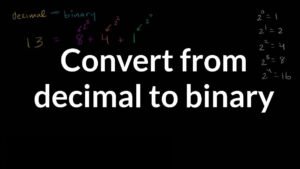
If you have been using currencies, you may have realized that not all currencies can be converted to other currencies without making some changes. Let’s say, for instance, that you are using the British pound as your currency and trying to convert to United States dollars. Odds are, there will be a lot of rounding involved before the two fractions will match up. What is the most feasible method for accomplishing this? How can you convert the fraction to the equivalent unit? This article will discuss these concepts and provide tips on rounding to ensure that conversions are accurate.
There are three common rounding methods:
# Rounding by the whole number
# Rounding by the fraction
# Simply rounding to the nearest whole number
The best method to use when dealing with a currency that uses the whole number method is to round to the nearest whole number. This gives the most exact results, but this isn’t always possible since each country’s currency rounding rules are different. When in doubt, though, it is often best to go with the nearest whole number so that you won’t have to worry about rounding off to the wrong number.
Suppose you are converting from a foreign currency using a base 2 decimal fraction. In that instance, the binary system is the most convenient. Converting from a binary to a fraction takes one extra step, though. You must convert the fraction before performing the actual conversion. For example, if you are going to convert from British pounds to U.S. dollars, you would convert the symbol for one to a leading zero (0) and then convert the symbol for the second to a leading bit (2).
One common mistake when converting from a binary format to a fractional number is rounding off to a significant number. You’ll likely get an incorrect rounded result when rounding to a significant digit. It’s because many decimals are just digits. You write two ten-thousandths of a dollar as ten-thousandths of a dollar. We round to the nearest whole number, so ten-thousandths of a dollar always comes out close to one. The best way to convert from a binary to a fraction is to use the binary form, then round to the nearest whole number.
This does not exclude you from converting the decimal point two places down. It simply implies that you must first grasp how the procedure works before converting. Don’t forget that converting from a fraction to a binary format always requires a leading bit. Binary zeros and ones are written as lower case hexadecimal digits for decimals in binary. When converting from any of these formats, it is always best to use the leading bit. This makes the resulting number much easier to read than rounding to the nearest whole number.
To convert the decimal to a binary format, multiply each digit by two. The result is going to be a binary number. A couple of examples to use would be “1234” or “10000”. With numbers you’re likely to use, such as money or weight in pounds or ounces, times a hundred, times a thousand, etc., binary conversion is easy.
Several computer systems today conveniently allow users to convert the decimal point to a binary equivalent. Decimal Numerator (DNN) is one such popular product. A binary Numerator (BNC) is another way to convert decimals. The best system for converting decimals to their binary equivalents would be to test the accuracy of your current software or use complementary products found on the Internet.
A computerized calculator can also be utilized to perform the conversion. This can be an option when you are not comfortable with the computer-based method. Suppose you cannot convert the fractional form into a binary equivalent. In that case, buying a software solution would be wise. This option will save you time while also ensuring that the data you enter is correct. learn more.
